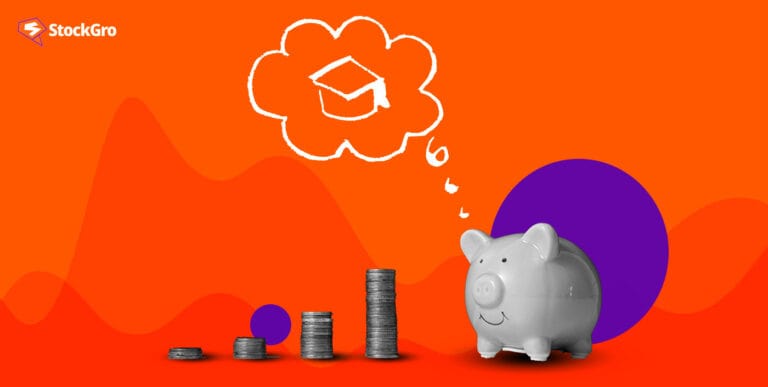
The capacity to understand and manage one’s finances is more than a luxury in today’s fast-paced society; it’s an absolute need. Financial literacy education is pertinent to this case. Learning numbers is important, but so is the ability to use that knowledge to make choices that have real-world consequences.
All aspects of our financial well-being, from day-to-day spending management to retirement planning guidance, rely on our level of financial literacy.
When it comes to our money, it gives us the ability to be proactive, knowledgeable, and confident. So, let’s set out on this path to financial literacy together, investigating the many available tools and resources.
Understanding financial literacy
A financially literate person can manage their money, create a budget, and invest wisely. It’s about being accountable for your financial situation and wisely managing your financial resources. The ability to save, invest, and increase one’s wealth is more important than merely increasing one’s income.
Moreover, with financial literacy comes fiscal responsibility. It is about being accountable for your financial decisions. Fiscal responsibility resources can teach us how to plan for the financial future, set financial objectives and make efforts to achieve them.
Financial literacy refers to the application of personal finance resources and the mastery of money skills development. At its core, financial literacy equips you with knowledge about money and how it works, allowing you to make better decisions and plan for your future with confidence.
Components of financial literacy
Budgeting: You should create a budget to begin handling your finances responsibly. Having a budget that regulates spending allows individuals to save or invest a larger portion of their income.
Saving: It means setting aside a portion of your income for future use as a part of your savings strategies. This financial safety net helps us save up for larger purchases and prevents us from going into debt.
Investing: The goal of investing is to generate a return on capital. It can help you achieve your long-term financial objectives and build wealth.
Debt management: To make a plan for paying off your debt, you need to know how much you owe, how much interest you’ve paid, and when the debt will be paid off. Only then you could properly use debt management solutions and the available credit management tips.
Also read: Components of financial literacy
The need for money management programs
The need for financial literacy programs is more pronounced when we consider the current state of financial literacy in India. Data shows that only 27% of people are financially literate. It shows a big knowledge gap in money matters and stresses how important it is to learn about money.
Interestingly, the Reserve Bank of India’s (RBI) financial literacy survey, released in June 2023, found that retired people know the most about money, scoring 13.5 out of 19.
It seems that financial knowledge tends to grow with age and experience, but it also shows how important it is to learn about money early on. Because, unfortunately, only 17% of Indian teens know how to handle money. This is a worrying statistic because the youth of this nation are its future leaders.
Money management programmes are designed to solve this problem by teaching you how to budget, save, and invest. Helping individuals take responsibility for their financial situation and make wise decisions is their primary objective.
In addition, economic literacy programmes cover a wider range of topics. They aim to help people understand how economies work so that they can make better financial decisions.
Individuals can improve their financial health, reach their financial goals, and help create a more stable and equitable economy with the help of the right financial empowerment tools.
Also read: Importance of Financial literacy
Financial literacy programs and resources
Numerous programmes designed to improve financial literacy, a crucial skill in today’s world, are promoted. Let’s look at a few:
NSE academy’s MKCL financial literacy program: This programme, a partnership between NSE Academy and Maharashtra Knowledge Corporation Ltd. (MKCL), teaches people the basics of handling their own money. The class talks about things like income, taxes, spending, savings, ways to invest, borrowing, managing risk, making a budget, and more. Some of MKCL’s Authorised Learning Centres offer it.
Financial education programme for adults (FEPA) by NCFE: Launched in 2019, FEPA aims to teach adults about money to groups of farmers, women, Asha workers, Anganwadi workers, self-help groups, organisation employees, skill development trainees, and more. The programme offers a wide range of services at no cost and addresses various financial concerns such as budgeting, savings, banking, digital transactions, insurance, investments, retirement, and pensions.
Diksha financial literacy programme by Parinaam Foundation: The goal is to give women from low-income families the information and financial well-being tips they need to manage their money, save safely, plan for the future, and make smart financial choices. Parinaam works with Ujjivan Small Finance Bank to run a savings programme where families can open savings accounts and access basic banking and financial services.
Financial literacy program by NIIT foundation: Among the most important skills for one’s professional and personal development is the ability to manage one’s own money wisely, and this financial literacy course teaches its participants how to do just that. With its video-based delivery and rich animated content, it offers a 10-hour certificate course in financial literacy. Anyone in need of financial literacy training can find it in this programme.
SEBI and NISM’s Initiative – Pocket Money: The “Pocket Money” workbook is created by the National Institute of Securities Markets (NISM) and the Securities and Exchange Board of India (SEBI). This workbook aims to help students become more financially literate. Key money management ideas like saving, investing, and creating a budget are the main points of instruction.
These programs utilise various methods such as budgeting workshops, investment education, and wealth-building resources to impart knowledge. They provide educational finance materials and tax planning assistance to empower individuals to make informed financial decisions.
Also read: https://www.stockgro.club/blogs/personal-finance/financial-literacy-camp/
Bottomline
Financial literacy is a critical skill in today’s complex financial landscape. For better financial decision-making, management, and goal attainment, it provides people with the information they need.
The various financial literacy programs available today are crucial in promoting financial literacy among different demographics. They help people take charge of their financial futures by providing them with education and useful resources. They also provide financial workshops and online financial courses to provide practical knowledge and experiences.
As we navigate the financial landscape, let’s leverage these programs and resources to enhance our financial literacy and secure our financial future.

